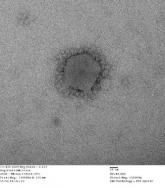The rate of secondary transmission to household members of patients with Middle East respiratory syndrome coronavirus (MERS-CoV) is 4%, a study has shown.
The researchers studied 26 symptomatic index patients in Saudi Arabia along with 280 of their household contacts, and found only 12 with laboratory evidence of infection. The report was published online Aug. 27 in the New England Journal of Medicine.
Dr. Christian Drosten of the University of Bonn (Germany) Medical Center and colleagues found the 12 contacts to have laboratory evidence of MERS-CoV infection a median of 17.5 days from onset of symptoms in the index patients they lived with. Two of the infected household contacts reported having had contact with camels. All 280 contacts were screened via RT-PCR assays on RNA from throat swabs along with serologic testing that included enzyme-linked immunosorbent assays (ELISAs), and immunofluorescence assays.
Of the 12 with evidence of infection, 7 carried MERS-CoV in their upper respiratory tract, generally in low levels. Nonetheless, "positive RT-PCR findings in persons with subclinical infection who are tested soon after exposure should be complemented by serologic analysis," the investigators wrote.
The median age of the household contacts in the study was 29, and of the 12 infected, only one developed symptoms, which were mild. "Persons in the first few decades of life without coexisting illnesses may be able to carry low levels of MERS-CoV RNA without obvious symptoms," the researchers wrote (N. Engl. J. Med. 2014 Aug. 27 [doi:10.1056/NEJMoa1405858]).
The investigators cited as a weakness of their study the fact that only 44 of the 280 contacts originally tested provided follow-up samples. This was because the first round of testing was obligatory in Saudi Arabia, and the second, voluntary. The lack of follow-up testing meant that "we cannot determine whether we may have missed contacts who had delayed seroconversion," they wrote.
Dr. Drosten’s research was funded by the European Commission and German government grants. One coauthor reported receiving payment from the Institute for Experimental Immunology affiliated with EuroIMMUN, a maker of reagents for diagnostics, and another reported support from EuroIMMUN as well as a pending patent related to human betacoronavirus lineage.
